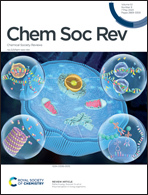Dinuclear metal synergistic catalysis for energy conversion
Abstract
Catalysts featuring dinuclear metal sites are regarded as superior systems compared with their counterparts with mononuclear metal sites. The dinuclear metal sites in catalysts with appropriate spatial separations and geometric configurations can confer the dinuclear metal synergistic catalysis (DMSC) effect, and thus boost the catalytic performance, in particular for reactions involving multiple reactants, intermediates and products. In this review, we summarize the related reports on the design and synthesis of both homogeneous and heterogeneous dinuclear metal catalysts, and their applications in energy conversion reactions, including photo-/electro-catalytic hydrogen evolution reaction (HER), oxygen evolution reaction (OER), oxygen reduction reaction (ORR), CO2 reduction reaction (CO2RR), and N2 reduction reaction (N2RR). Particularly, we focus on the analysis of the relationship between the catalyst structure and catalytic performances, where the design principles are presented. Finally, we discuss the challenges in the design and preparation of dinuclear metal catalysts with the DMSC effect and present a perspective on the future development of dinuclear metal catalysts in energy conversion. This review aims to comprehensively summarize the up-to-date research progress on the synthesis and energy-related application of dinuclear metal catalysts and provide guidance for designing energy-conversion catalysts with superior performances.



 Please wait while we load your content...
Please wait while we load your content...